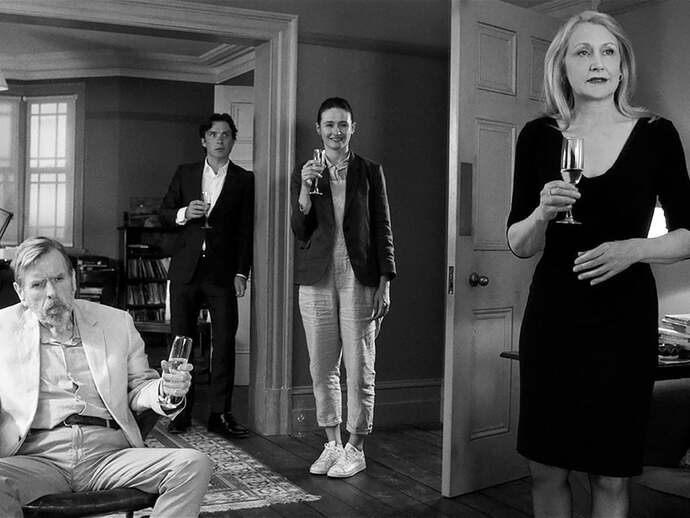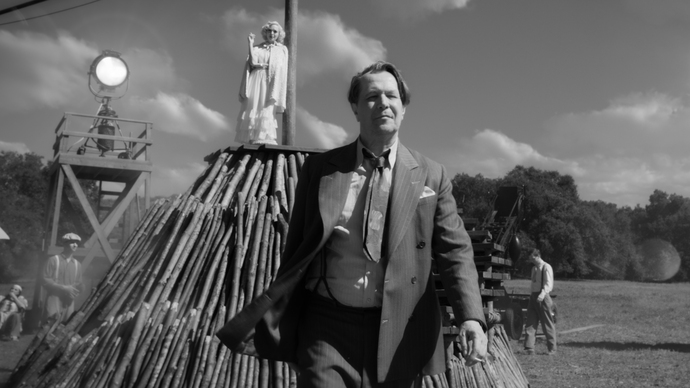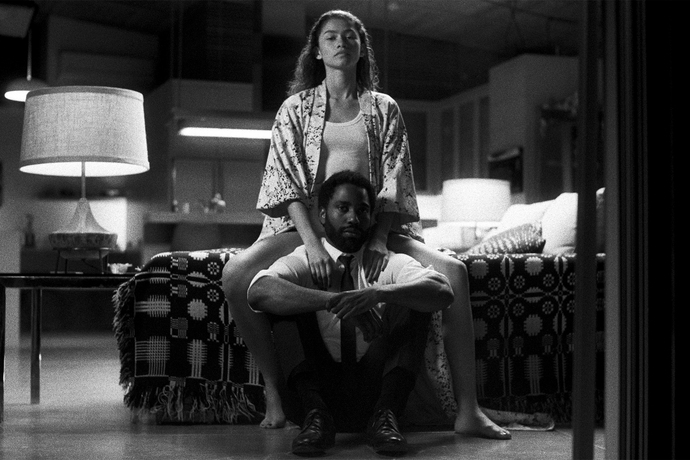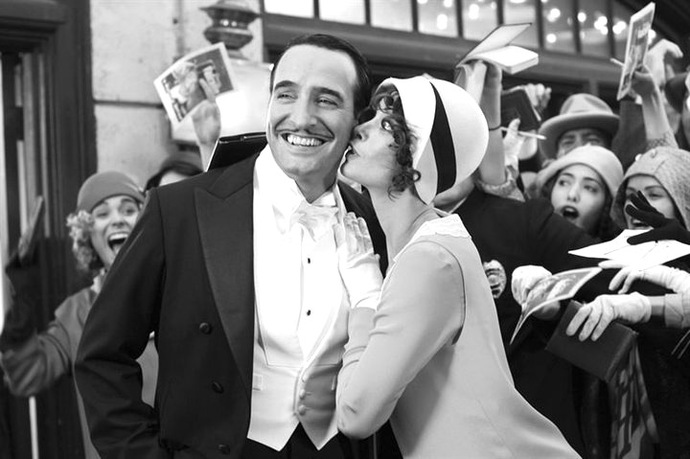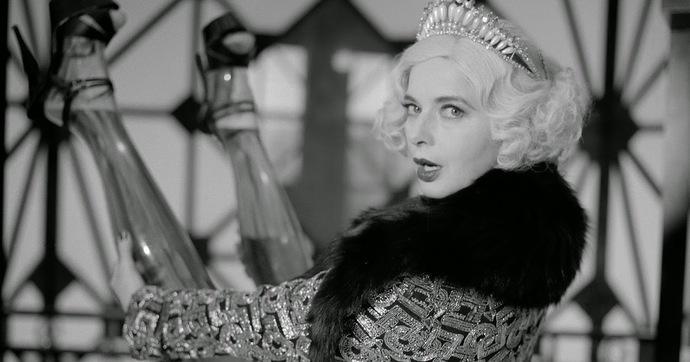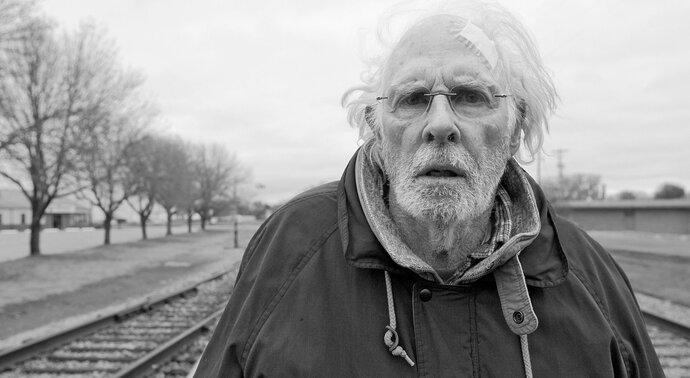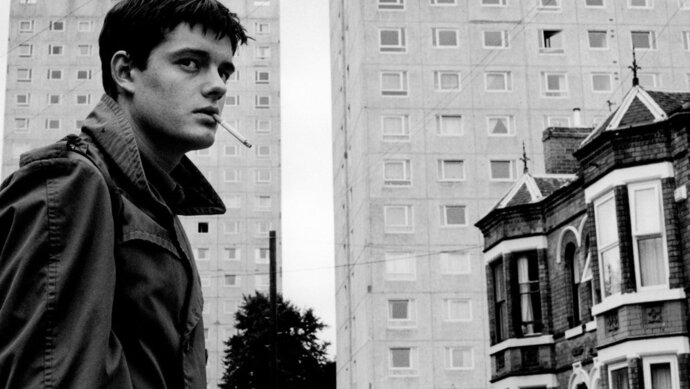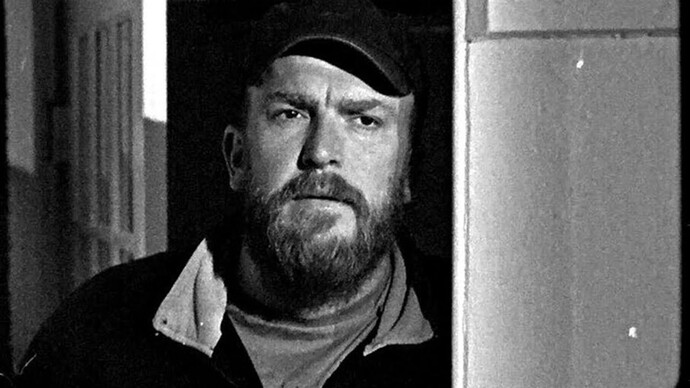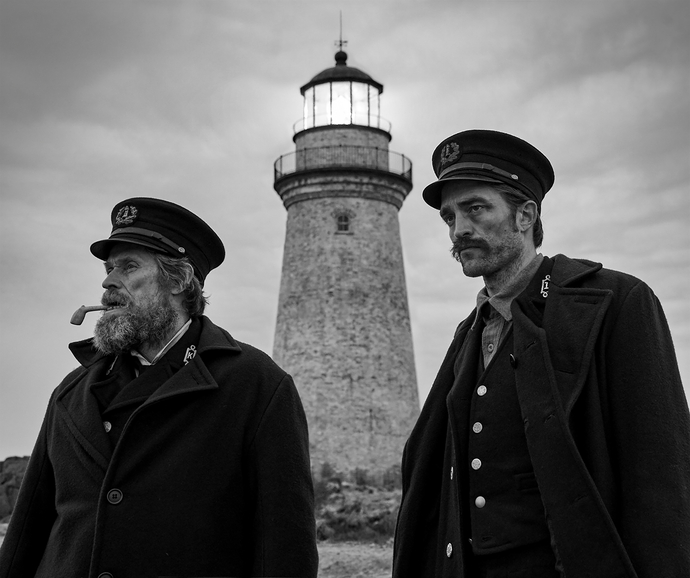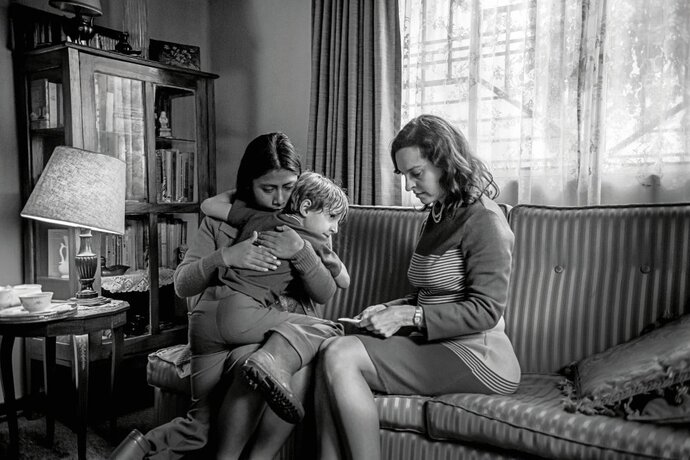Either way, there have been handfuls of modern movies that chose to incorporate black-and-white filming in various ways, and they’ve proven to be stunning examples of how the monochromatic experience can truly enrich a story in ways that aren’t just cosmetic. Here are our favorite picks for the best modern black and white movies that were released in the 21st century.
10. The Party (2017)
An ensemble cast stars in Sally Potter’s black-comedy The Party, shot completely in black and white. Everything is oh-so-sophisticated for ascending politician Janet’s (played by Kristin Scott Thomas) celebration. There’s champagne, canapes, and intellectual conversation—but beneath the surface, there are also love affairs, hard drugs, and a gun. A series of worsening announcements causes the evening to unravel, and Janet’s colorful future drains away… like the film’s color palette.
9. Mank (2020)
You’ve probably heard of the famous black-and-white classic movie Citizen Kane directed by Orson Welles. But what about the man who wrote it? If you thought Welles wrote it, you’re in for a surprise. Welles wasn’t the only one on scene, and conflict arose when it came time to credit the film’s creator. As it turns out, Herman J. Mankiewicz was the true genius behind Citizen Kane’s script, who turned out a masterpiece despite being a foggy-minded alcoholic. In Mank, Gary Oldman plays the bleary Hollywood writer under the direction of David Fincher. To reflect the timeframe—and Citizen Kane itself—Mank plays out with the desaturation of 1930s cinema.
8. Malcolm & Marie (2021)
Malcolm & Marie received mixed reviews upon release in early 2021. On the one hand, the performances by Zendaya and John David Washington are impeccable. The direction is clean and the grayscale cinematography is beautiful. However, the scenes found themselves playing on something of a loop, and director Sam Levinson was accused of being overly self-indulgent. It’s practically an autobiography, but without the white privilege. That said, the look of this movie is a wonder to behold. Over the course of one night—the night of Malcolm’s successful film premiere—the young couple swing between loving and hating each other. Intense and emotive, Malcolm & Marie is worth the watch.
7. The Artist (2011)
For a film about silent cinema, it only makes sense if that film looks like silent cinema. But Michel Hazanavicius took it one step further and made The Artist sound like silent cinema—by taking away all of its dialogue completely. 1920s film star George Valentin (played by Jean Dujardin) has his career threatened by the birth of “talkies” (i.e. movies with sound) and at the same time falls in love with the young Peppy Miller (played by Bérénice Bejo). This French comedy-drama may be clichéd at times, but what silent-era romance wasn’t? Hazanavicius pays tribute to early Hollywood through his dynamic and creative filmmaking, boldly omitting any words or color for a truly authentic feel.
6. The Saddest Music in the World (2003)
A musical with an experimental twist, The Saddest Music in the World is an imaginative take on old-school filmmaking. Isabella Rossellini is a baroness who announces a competition to find—you guessed it—the saddest music in the world. But the contest is a publicity stunt to promote her company during the Great Depression. Bizarre and nostalgic, this one isn’t to every viewer’s taste. To imitate the 1920s/1930s, Guy Maddin shot the whole movie in black and white (as he does with many of his films). “If you’re sad and like beer, I’m your lady” is one way to reel in an audience.
5. Nebraska (2013)
Bruce Dern plays the dishevelled and beer-pumped Woody Grant, who believes he won a million-dollar sweepstake prize. His son David (played by Will Forte) realizes it’s a scam, but still ends up driving him 750 miles to Lincoln, Nebraska. Alexander Payne directs this straight-talking comedy-drama, using a black-and-white aesthetic to emphasize the “poetic power” of the landscapes that play such a pivotal role in the story. Payne went against the distributors’ wishes for Nebraska, who wanted to accommodate a more mainstream audience with color. We’re glad he stuck to his guns and kept his choice!
4. Control (2007)
Beyond simply being used to achieve a vintage look, the black-and-white aesthetic is a great tool for gloomy artistic expression. That fits perfectly with the life of Joy Division singer Ian Curtis, whose life is recounted in Control. The Manchester-born musician suffered with epilepsy and depression, sadly committing suicide at the age of 23. Anton Corbijn absorbs us into Curtis’ painful world, torn between his heart and conscious, exhausted by the demands of his work. Sam Riley gives an astounding performance as the late singer, and Corbijn opts for a true sense of realism over the frills and clichés of most celebrity biopics.
3. Bait (2019)
I don’t think anyone saw this film coming. It’s rare for experimental cinema to make waves through mainstream audiences, but Mark Jenkin proved it’s not entirely impossible. Bait is a grainy black-and-white 16mm film, shot on a vintage hand-cranked Bolex camera. It takes place in a Cornwall fishing village where Martin Ward (played by Edward Rowe) struggles to make ends meet. Issues of tourism, gentrification, and poverty are explored in a textured cinematic experience that’s like no other. Bait received glowing critical reviews, hailed for its unique and immersive achievements.
2. The Lighthouse (2019)
Robert Pattinson plays a young rookie seeking peace while Willem Dafoe plays a gnarly veteran with a ye-olde-sailor’s accent. Both are stuck together in the late 19th century as lighthouse keepers of a lonely New England island, struggling to keep hold of their sanity. Sea monsters and stark imagery set The Lighthouse apart from the other movies on this list, taking viewers on a gradual decline into madness. Besides its eerie plot, Robert Eggers’ masterpiece is a visual splendor that had us gasping in awe and horror.
1. Roma (2018)
Roma won the Academy Award for Best Cinematography in 2019, and we can certainly see why. No one can argue with first place going to director Alfonso Cuarón’s Spanish drama set in the early 1970s. Cleo (played by Yalitza Aparicio) is an indigenous live-in maid for a middle-class white family in Mexico City. As ever, Cuarón’s tear-jerking spectacle has many important political undertones as it explores themes of motherhood, social class, and inequality. Aparicio’s acting debut was a glittering success and Roma was praised for its dynamic storytelling. Cuarón opted for the monochromatic look as a way of using the present to look into the past. The lessons we learn from history must not be forgotten today. Read next: The best Netflix Original movies

